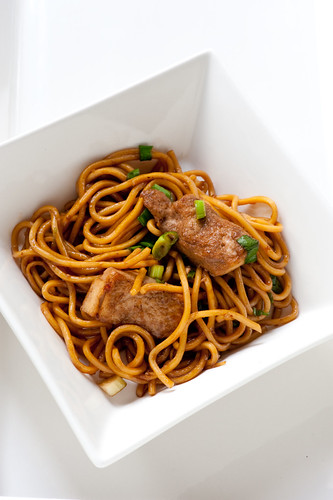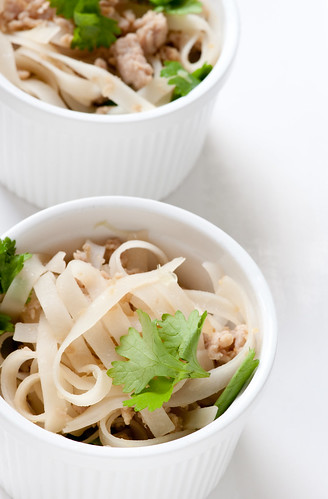
hokkien noodles with tofu, honey & soy
serves 4
Hokkien noodles are fresh wheat based noodles that are a lot like fresh fat spaghetti. They are usually in the chiller section of the supermarket, although I have seen some that are shelf stable in the Asian food section. If you can’t find hokkien noodles any other thick wheat based noodle would work well or even some spaghetti or bucatini.
If you’re not a fan of tofu, feel free to substitute in finely sliced chicken breast or even beef.
1lb (500g) fresh hokkien or singapore noodles
10oz (300g) firm tofu, chopped into large chunks
1/3 cup soy sauce
2 tablespoons honey
6 green onions, finely sliced
Place noodles in a heatproof bowl and cover with boiling water. Allow to stand for 1 minute then massage to loosen into individual strands. Drain.
Heat some peanut or other vegetable oil in a large wok or frying pan. Add tofu and stir fry until golden brown. Mix together soy and honey in a small bowl then add to the wok. Stir and allow to cook until slightly reduced. Toss through noodles and green onion and serve hot.

rice noodles with chicken & lime
serves 4
This is based on the Thai dish ‘larb’ which is a fresh fragrant stir fry of ground chicken or pork. If you don’t want to invest in a bottle of fish sauce you could use 1/4 cup soy sauce instead. It will be slightly more salty and heavy but still lovely and fresh with the lime and herbs.
Dried rice noodles are an excellent option when you’re catering for people with wheat and gluten sensitivity. Rice noodles could be substituted in any of the recipes above. Just soften them first by soaking in a bowl of boiling water and off you go.
Another allergen note. Most soy sauces contain some wheat derivitaves and aren’t suitable for gluten free diets. The Japanese soy sauce known as Tamari does not contain wheat so look for this if you need to.
3/4lb (375g) rice sticks (dried rice noodles)
1 1/2lb (600g) ground chicken
1/3C fish sauce
1/4C lime juice + lime halves to serve
1 bunch coriander or fresh mint, leaves picked
Place noodles in a large heatproof bowl. Cover with boiling water and allow to soften.
Heat some peanut or vegetable oil in a large wok or frying pan. Cook chicken over high heat until well browned. Drain noodles and add to pan. Cook until noodles are heated through and softened. Add fish sauce and stir for a few seconds. Remove from the heat and toss through lime juice and herbs.
